
The Minnesota Democratic–Farmer–Labor Party (DFL) is a political party in the U.S. state of Minnesota affiliated with the national Democratic Party. The party was formed by a merger between the Minnesota Democratic Party and the Minnesota Farmer–Labor Party in 1944. The DFL is one of two state Democratic Party affiliates with a different name from that of the national party, the other being the North Dakota Democratic–Nonpartisan League Party.
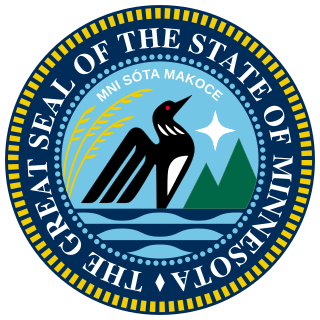
The governor of Minnesota is the head of government of the U.S. state of Minnesota, leading the state's executive branch. Forty people have been governor of Minnesota, though historically there were also three governors of Minnesota Territory. Alexander Ramsey, the first territorial governor, also served as state governor several years later. State governors are elected to office by popular vote, but territorial governors were appointed to the office by the United States president. The current governor of Minnesota is Tim Walz of the Democratic-Farmer-Labor Party (DFL).

Albert Harold "Al" Quie was an American politician and farmer. Quie served as a member of the United States House of Representatives from 1958 to 1979 and as Governor of Minnesota from 1979 to 1983.

Karl Fritjof Rolvaag was an American diplomat and politician who served as the 31st governor of Minnesota from March 25, 1963, to January 2, 1967, as a member of the Democratic-Farmer-Labor (DFL) Party. He was the son of the author and professor Ole E. Rølvaag.

The Republican Party of Minnesota is the state affiliate of the Republican Party in Minnesota and the oldest active political party in the state. Founded in 1855, the party is headquartered in Edina, and the current chairman is David Hann.

The lieutenant governor of Minnesota is a constitutional officer in the executive branch of the U.S. state of Minnesota. Fifty individuals have held the office of lieutenant governor since statehood. The incumbent is Peggy Flanagan, a DFLer and the first Native American elected to a statewide executive office in Minnesota's history.

The 1936 United States Senate elections coincided with the reelection of President Franklin D. Roosevelt. The 32 seats of Class 2 were contested in regular elections, and special elections were held to fill vacancies. The Great Depression continued and voters backed progressive candidates favoring Roosevelt's New Deal in races across the country. The Democrats gained 5 net seats during the election, and in combination with Democratic and Farmer–Labor interim appointments and the defection of George W. Norris from the Republican Party to become independent, the Republicans were reduced to 16 seats. Democrats gained a further two seats due to mid-term vacancies. The Democrats' 77 seats and their 62-seat majority remain their largest in history.

The 1962 United States House of Representatives elections was an election for the United States House of Representatives on November 6, 1962, to elect members to serve in the 88th United States Congress. They occurred in the middle of President John F. Kennedy's term. As in most midterm elections, Kennedy's Democratic Party lost seats to the opposition Republican Party, but retained a majority. House Democrats were expected to lose their majority, but the resolution over the Cuban Missile Crisis just a few weeks prior led to a rebound in approval for the Democrats under President Kennedy.

The attorney general of Minnesota is a constitutional officer in the executive branch of the U.S. state of Minnesota. Thirty individuals have held the office of Attorney General since statehood. The incumbent is Keith Ellison, a DFLer.

The secretary of state of Minnesota is a constitutional officer in the executive branch of government of the U.S. state of Minnesota. Twenty-two individuals have held the office of secretary of state since statehood. The incumbent is Steve Simon, a member of the Minnesota Democratic-Farmer-Labor Party.
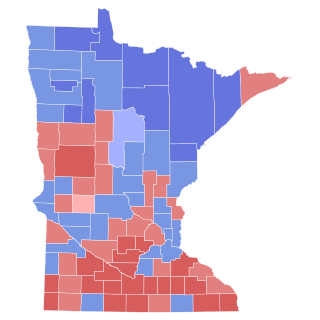
The 1962 Minnesota gubernatorial election was the closest statewide race in Minnesota history and one of the closest gubernatorial elections in U.S. history. The election was held on November 6, 1962, but the results were not known until March 21, 1963. The vote count after election day had Governor Elmer L. Andersen in the lead by 142 votes. Then-Lieutenant Governor Karl Rolvaag went to court and won the right to a recount. After the recount, it was determined that Rolvaag had defeated Andersen by 91 votes out of over 1.2 million cast. He received 619,842 votes to Andersen's 619,751.
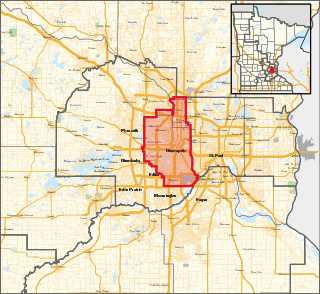
Minnesota's 5th congressional district is a geographically small urban and suburban congressional district in Minnesota. It covers eastern Hennepin County, including the entire city of Minneapolis, along with parts of Anoka and Ramsey counties. Besides Minneapolis, major cities in the district include Brooklyn Center, St. Louis Park, Richfield, Crystal, Robbinsdale, Golden Valley, New Hope, Fridley, and a small portion of Edina.
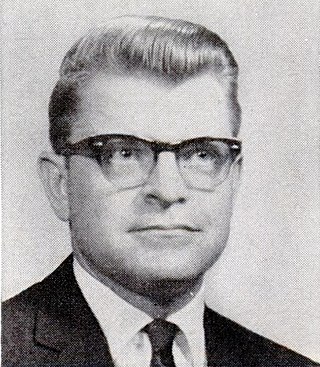
Alec Gehard Olson is an American retired politician from the U.S. state of Minnesota who served as a member of the United States House of Representatives from 1963 to 1967, a member of the Minnesota Senate from 1969 to 1976, and as Lieutenant Governor of Minnesota from 1976 to 1979.

Georgia Olive Cozzini was an American socialist politician. She is best remembered as the first woman to run for Governor of Wisconsin and for two consecutive runs as the vice presidential candidate of the Socialist Labor Party of America, appearing on the ballot in 1956 and 1960.

The state treasurer of Minnesota was a constitutional officer in the executive branch of the U.S. state of Minnesota. Twenty-six individuals occupied the office of state treasurer from 1858 until the office's abolition in 2003. The final state treasurer was Carol C. Johnson, a DFLer.
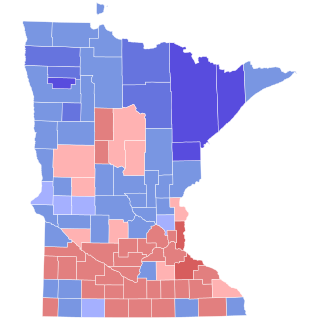
The 1990 Minnesota gubernatorial election took place on November 6, 1990. Independent-Republican Party State Auditor and challenger Arne Carlson defeated then Minnesota Democratic–Farmer–Labor Party Governor Rudy Perpich, who had defeated Mike Hatch for the Democratic nomination. This remains the last gubernatorial election in Minnesota to date in which an incumbent governor ran for reelection to a third term.
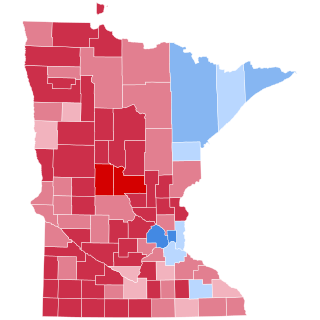
The 2016 United States presidential election in Minnesota was held on Tuesday, November 8, 2016, as part of the 2016 United States presidential election in which all 50 states plus the District of Columbia participated. Minnesota voters chose electors to represent them in the Electoral College via a popular vote, pitting the Republican Party's nominee, businessman Donald J. Trump, and running mate Indiana Governor Michael R. Pence against DFL nominee, former Secretary of State Hillary Clinton, and her running mate Virginia Senator Tim Kaine. Minnesota has ten electoral votes in the Electoral College.

United States gubernatorial elections were held 6 November 1962 in 35 states, concurrent with the House and Senate elections.

The 2022 Minnesota gubernatorial election took place on November 8, 2022, to elect the governor of Minnesota. Incumbent Democratic (DFL) Governor Tim Walz defeated the Republican nominee, former state senator Scott Jensen, winning a second term.
Smiley v. Holm, 285 U.S. 355 (1932), was a decision of the Supreme Court of the United States involving a governor's power to veto a congressional redistricting proposal passed by a state's legislature. In an opinion by Chief Justice Charles Evans Hughes, the Court unanimously held that the U.S. Constitution did not prohibit Minnesota's governor from vetoing that state's redistricting map.





















